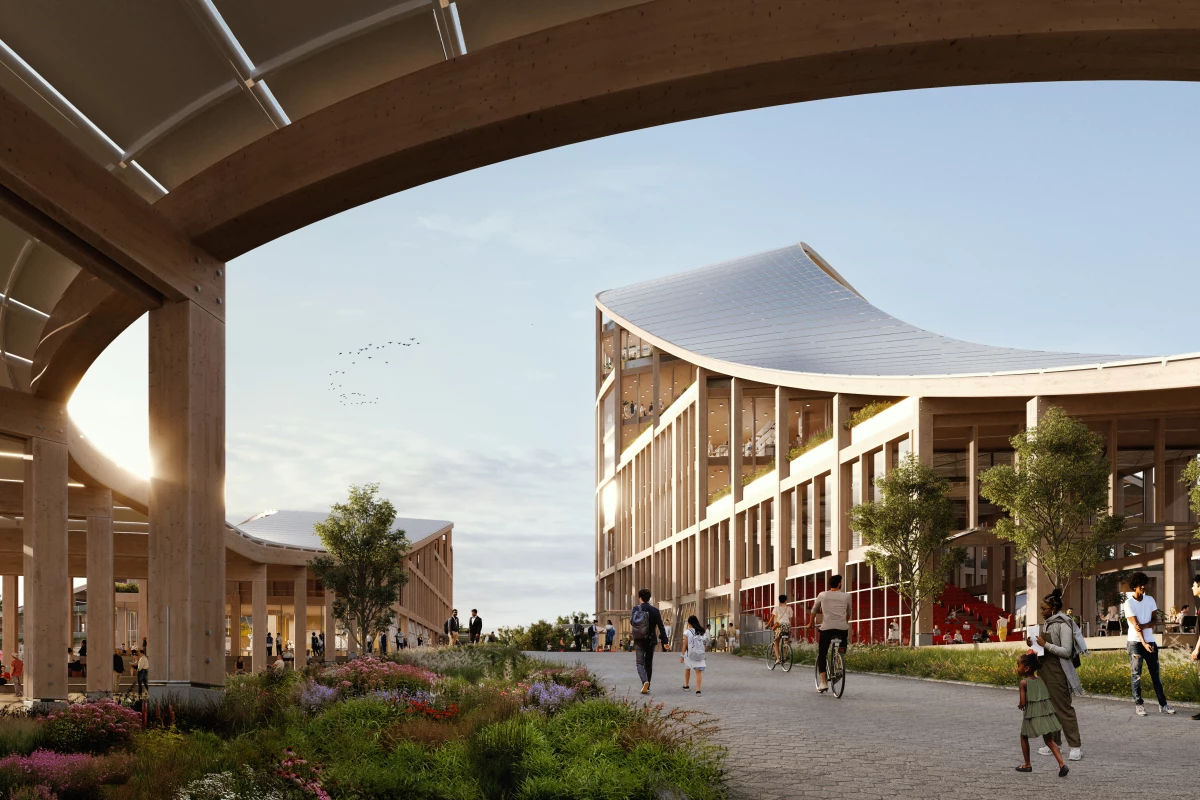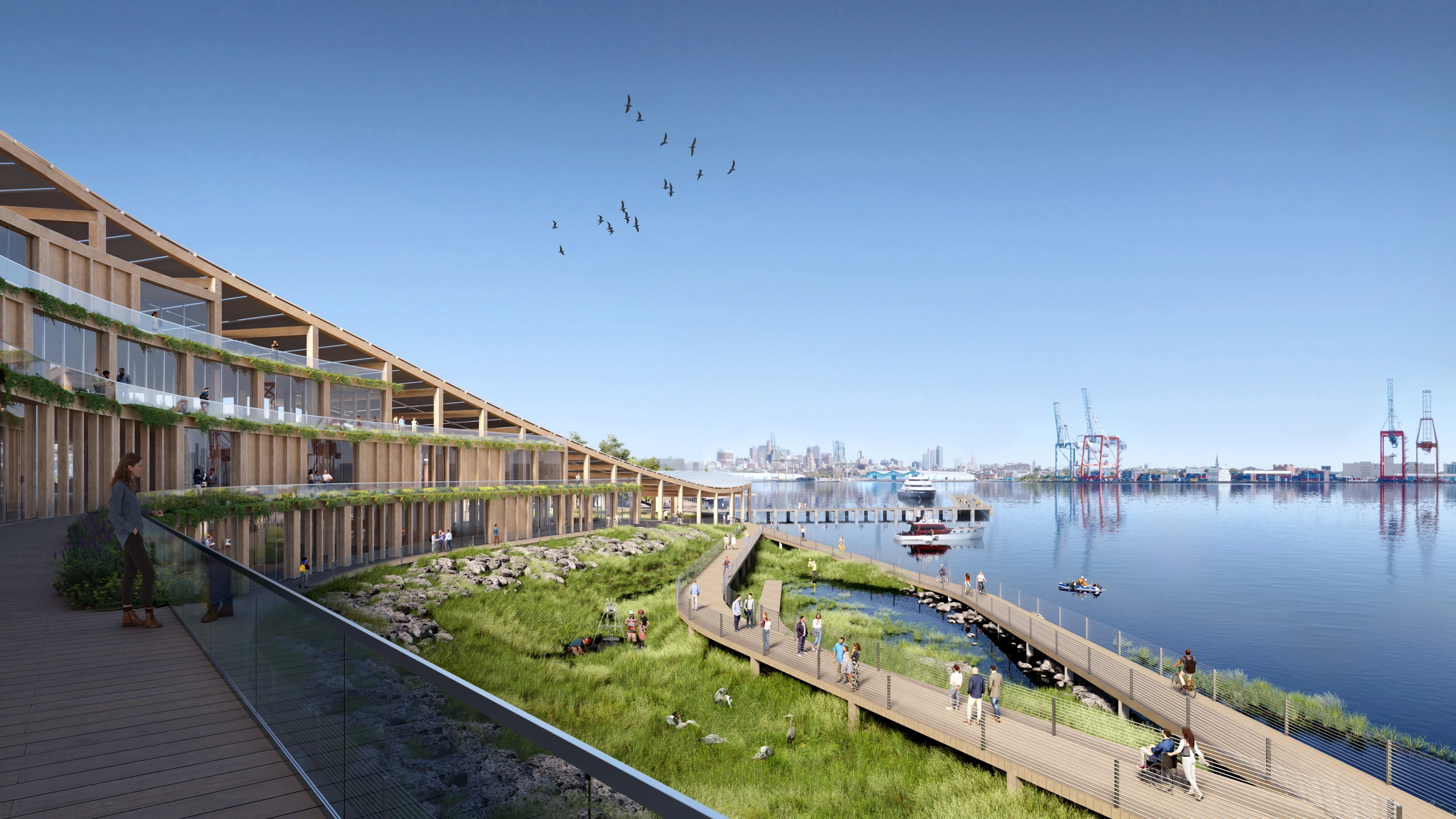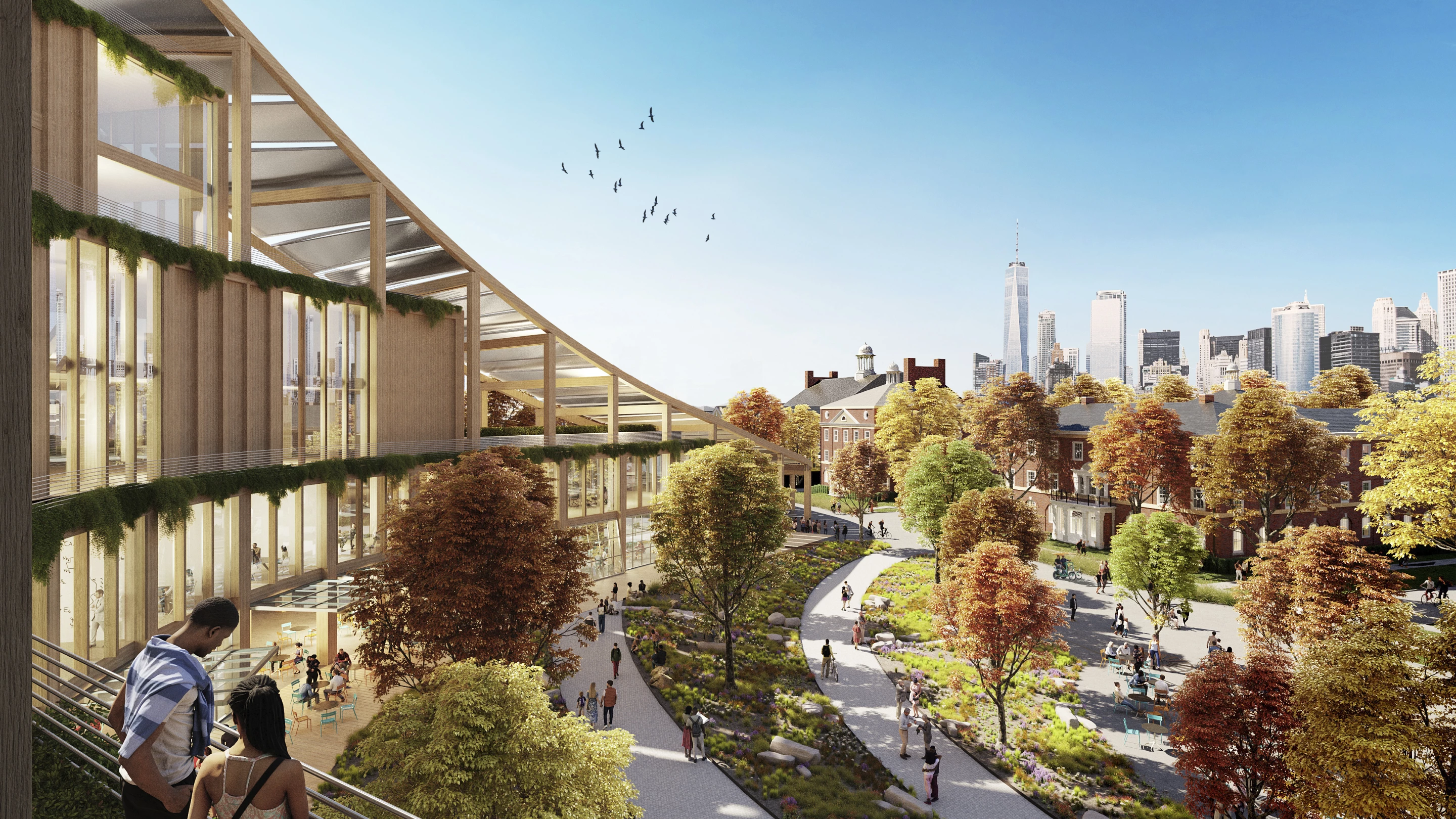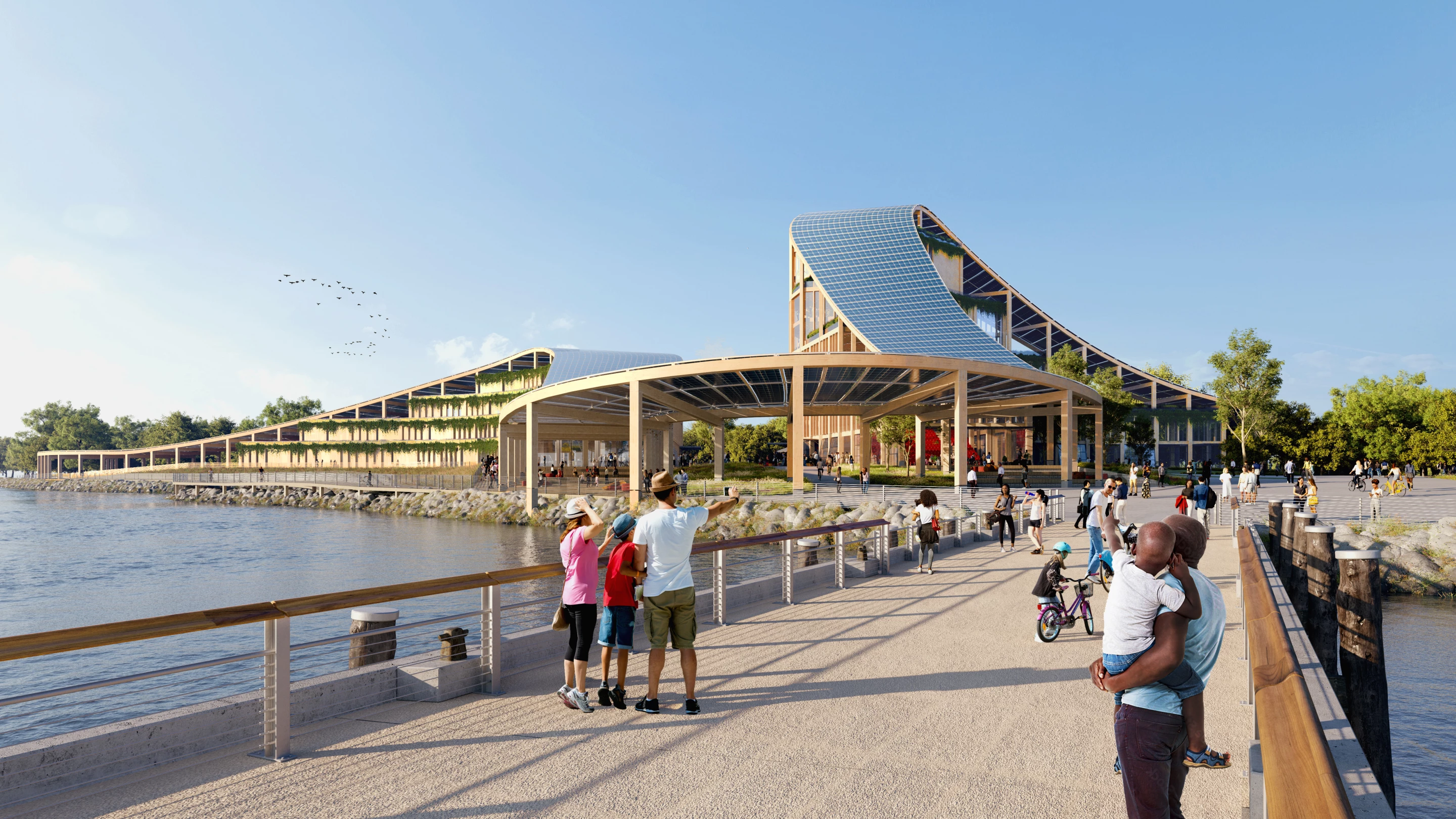Influential architecture firm Skidmore, Owings & Merrill (SOM) and Stony Brook University have revealed plans for a large new development on New York City's Governors Island that will be focused on bringing people together to tackle climate change. The New York Climate Exchange will also walk the walk with ambitious sustainability features, including the ability to meet its own power and non-potable water needs.
The New York Climate Exchange is described as a first-of-its-kind international center for developing and deploying solutions to the global climate crisis. It will offer job training and host public gatherings, alongside academic and community programs and practical learning opportunities.
Structurally, it will consist of attractive sloping pavilions and buildings constructed using sustainably sourced timber, with a focus on energy efficiency and flood-resistance. It will host research labs, classroom space, exhibits, greenhouses, and housing, and will be designed to weave into the existing park space on the island. It will also be one of the first projects in the US to receive the True Zero Waste green building certification and will meet all non-potable water needs with rainwater and recycled wastewater, while producing all required power from roof-based solar panels. Though no figures on the solar panel capacity are available at this early stage, it will be sufficient to create surplus electricity, says SOM, which will then be fed into the NYC grid.

"Our design for this new campus embodies the stewardship necessary to solve the climate crisis by weaving sinuous mass timber pavilions through the rolling landscape of the park and reusing the historic building fabric of Governors Island," said SOM Design Partner Colin Koop. "Together, these spaces will cultivate advances in climate research and pilot new technologies that can be deployed across the city, and eventually the world."
The New York Climate Exchange is being created in collaboration with Mathews Nielsen Landscape Architects, Buro Happold, Langan Engineering, and the Governors Island Trust. We've no word yet on when it's expected to begin construction.
Source: SOM








